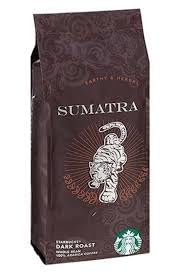Indonesia is one of the world’s leading coffee producers and exporters, consistently ranking among the top five globally. Coffee cultivation has been part of Indonesia’s agricultural landscape since the 17th century when it was introduced by the Dutch, and today it remains a vital livelihood for millions of smallholder farmers across the archipelago. The country’s coffee is grown in diverse agro-ecological zones spread across major islands such as Sumatra, Java, Sulawesi, Bali, Flores, and Papua, typically at elevations ranging from 800 to 1,800 meters above sea level. These regions benefit from volcanic soils, abundant rainfall, and a humid tropical climate, all of which create optimal conditions for both Arabica and Robusta production. Indonesia produces about 11–12 million 60-kg bags of coffee annually, with Robusta accounting for roughly 70–75 percent of total output, mostly from lowland areas such as southern Sumatra, Java, and parts of Sulawesi, while Arabica, which represents about 25–30 percent, is grown in highland areas and primarily exported to markets including the United States, Japan, Germany, Malaysia, and Italy.
Sumatra is Indonesia’s largest coffee-producing region, with Aceh’s Gayo Highlands and North Sumatra’s Mandheling and Lintong areas renowned for their full-bodied Arabica characterized by low acidity and earthy, herbal notes. These coffees often undergo the traditional wet-hulled or giling basah process, which imparts their distinctive heavy body and muted acidity. Java, one of the earliest coffee-growing regions in the world, is known for balanced, sweet, and nutty coffees grown in East Java’s Ijen Plateau and parts of West Java. In Sulawesi, particularly in the Toraja and Enrekang areas, Arabica coffee thrives at elevations of 1,100–1,800 meters, producing beans celebrated for their deep, syrupy body, spicy complexity, and fruity undertones. Bali’s Kintamani Highlands are famous for clean, citrusy, and floral Arabica cultivated under shade in volcanic soils, often within organic and fair-trade systems. Further east, Flores produces rich, chocolaty, and mildly acidic Arabica in regions like Bajawa and Manggarai, while Papua’s highlands, including Wamena and the Baliem Valley, yield smooth, sweet, and herbal coffees prized in the specialty market despite their limited production.
Indonesia’s coffee sector features a variety of processing methods, with wet-hulled dominant in Sumatra and Sulawesi, and fully washed or natural methods more common in Bali, Flores, and Papua. The main Arabica varieties include Typica, Catimor, Timtim, and Linie S, while Robusta is concentrated in Lampung, Bengkulu, and lowland Java. Recent years have seen significant developments, with rising domestic consumption making Indonesia one of the world’s largest coffee-consuming nations alongside growing international demand for traceable and specialty-grade Arabica. Government and private initiatives have focused on rejuvenating aging coffee trees, promoting climate-resilient varieties, improving post-harvest processing, and supporting sustainability certifications such as Rainforest Alliance, UTZ, and Fair Trade. Overall, Indonesia’s coffee industry continues to combine tradition with innovation, producing a remarkable diversity of flavours from the earthy and bold Sumatran profiles to the bright, citrusy tones of Bali and the smooth sweetness of Papua reflecting the country’s rich geographic and cultural variety.








